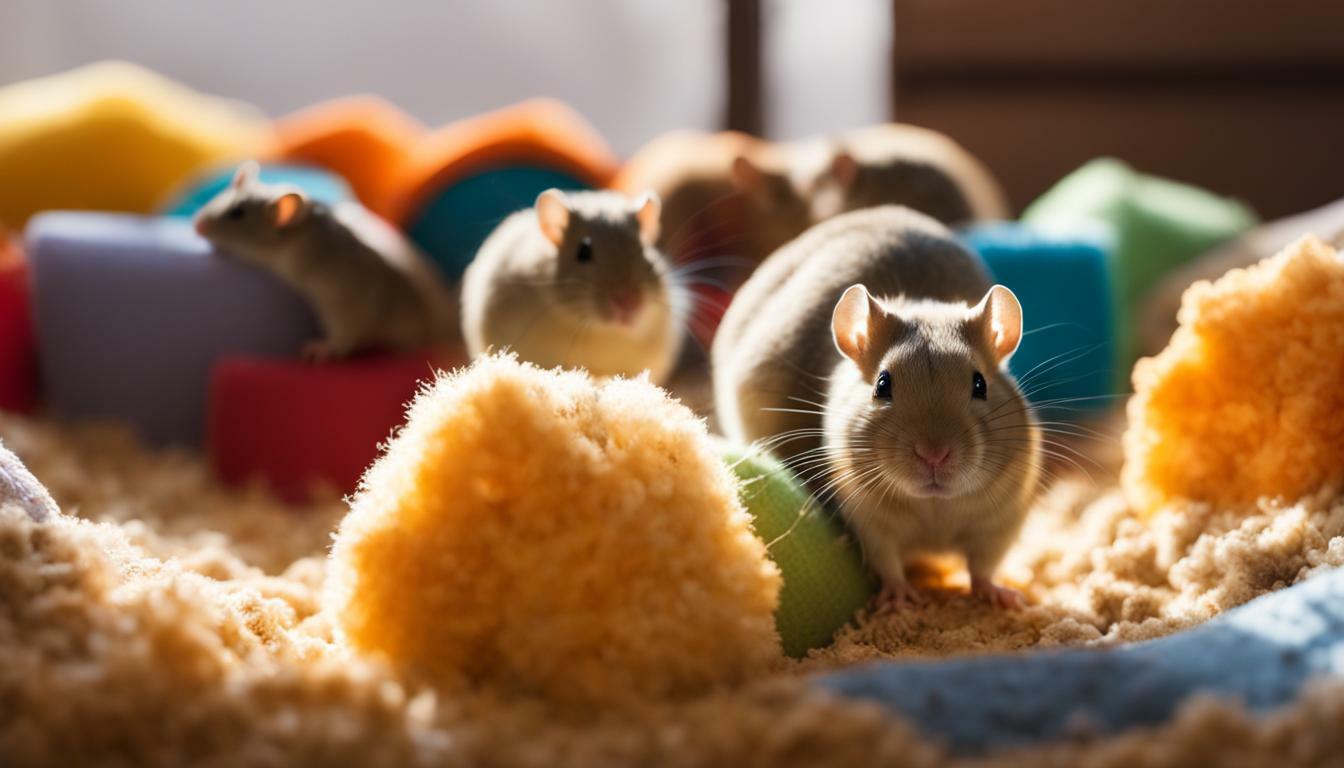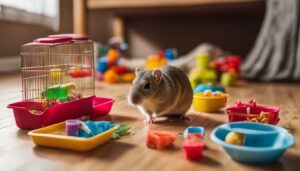Many pet owners wonder if gerbils and hamsters can live together harmoniously. While these small rodents may seem similar, they have different needs and personalities that make cohabitation challenging. Gerbils are social animals that thrive in the company of their own kind, while hamsters prefer a more solitary lifestyle. To ensure the well-being of both species, it is best to house gerbils and hamsters separately.
- Gerbils and hamsters have different needs and personalities, making it difficult for them to coexist.
- Gerbils are social animals that require companionship and stimulation, while hamsters are more solitary and territorial.
- Gerbils can live in colonies of up to 20 other gerbils, but they can be aggressive towards unfamiliar gerbils.
- It is not recommended to mix different species of rodents, as they may fight and harm each other.
- Gerbils should be housed with other gerbils of the same sex, while hamsters are better off living with their own kind.
Understanding Gerbils and Hamsters as Pets
Gerbils and hamsters are popular choices as small pets, but they have distinct differences in terms of their social nature and behaviors. Gerbils are highly social animals that thrive when kept in groups, while hamsters are more solitary and prefer to live alone. Understanding these differences is crucial when considering them as pets.
Gerbils are known for their sociable and active nature. They enjoy the company of other gerbils and benefit from having companionship and stimulation. In the wild, gerbils live in large colonies of up to 20 other gerbils, creating intricate burrow systems and engaging in social interactions. Therefore, it is recommended to keep gerbils in pairs or small groups to ensure their well-being.
On the other hand, hamsters are solitary animals that prefer to have their own territory. They are more territorial and may become aggressive towards unfamiliar hamsters. It is best to house hamsters separately to prevent potential conflicts and ensure their individual needs are met.
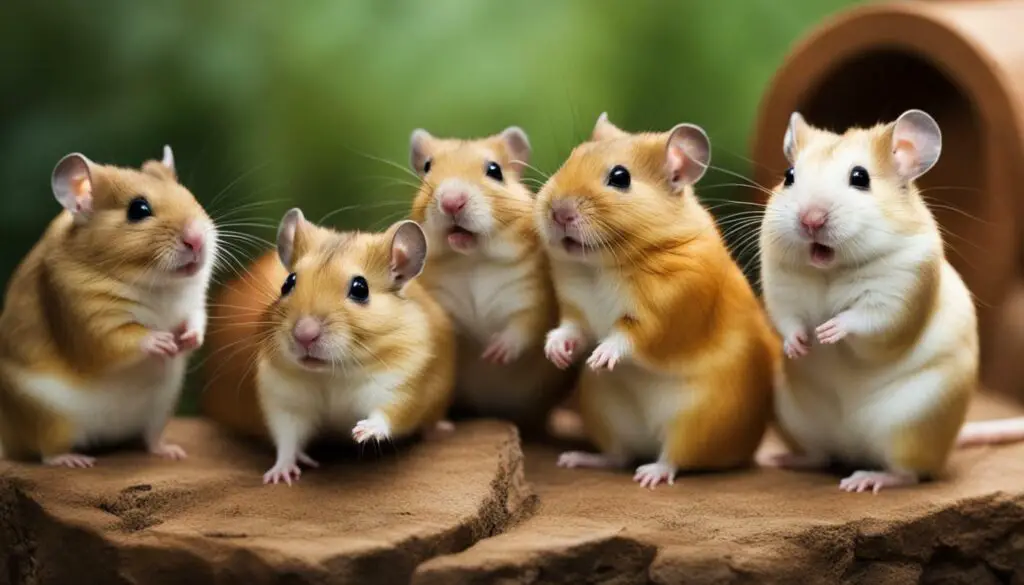
Housing Requirements
| Gerbils | Hamsters |
|---|---|
| Gerbils require a larger living space due to their social nature. A glass or plastic tank with a secure lid or a wire cage with narrow spacing is ideal. | Hamsters need a smaller enclosure, such as a cage with solid walls and a well-ventilated top. Wire cages are not suitable as hamsters can squeeze through the bars. |
| Provide multiple levels, hiding spots, and tunnels for gerbils to explore and satisfy their natural burrowing instincts. | Hamsters require plenty of bedding material to create burrows and nests. Offer a suitable substrate, such as aspen shavings or paper-based bedding, for them to dig and burrow in. |
| Ensure that the habitat has enough space for each gerbil to establish its territory and avoid overcrowding. | Hamsters need enough space to exercise and explore but should not be housed together due to their solitary behavior. |
It is important to consider the compatibility of different species before housing them together. Mixing gerbils and hamsters can lead to aggression and harm. Gerbils should be housed with other gerbils of the same sex, while hamsters are better off living with their own kind. Providing a suitable environment that meets each species’ specific needs is crucial for their well-being and happiness as pets.
Gerbils’ Social Nature
Gerbils are social animals that thrive in the company of their own kind. They form strong bonds with their fellow gerbils and rely on social interaction for their well-being. Keeping gerbils together allows them to exhibit natural behaviors, such as grooming each other, playing, and communicating through squeaks and body language.
When considering keeping gerbils and hamsters together, it’s important to understand that gerbils have different social needs compared to hamsters. Gerbils are highly social and prefer living in colonies of up to 20 other gerbils. They establish a hierarchical structure within their group, which helps maintain harmony and order.
To promote successful coexistence, it is essential to introduce gerbils to each other gradually and provide a spacious and enriched habitat. This allows them to establish a hierarchy and bond with each other. Providing multiple hiding spots, toys, and tunnels can also help stimulate their natural instincts and prevent boredom.
| Key Points – Gerbils’ Social Nature |
|---|
| Gerbils thrive in the company of their own kind |
| They form strong bonds and rely on social interaction |
| Introduce gerbils gradually and provide a spacious habitat |
| Offer hiding spots, toys, and tunnels to stimulate their instincts |
The Importance of Gerbil Compatibility
While gerbils are social animals, it is crucial to consider compatibility when housing them together. Not all gerbils will get along, and unfamiliar gerbils may exhibit aggressive behavior towards each other. It is recommended to house gerbils with their littermates or introduce gerbils of similar ages and sizes to increase the chances of successful cohabitation.
It’s important to monitor their interactions closely during the introduction process. Signs of aggression, such as biting, chasing, or excessive fighting, indicate that the gerbils may not be compatible. In such cases, it is crucial to separate them to prevent injury and stress.
“Gerbils are highly social animals that require companionship and mental stimulation. It’s essential to consider their compatibility and introduce them gradually to ensure a harmonious living environment.” – Dr. Emily Thompson, Veterinarian.
By understanding and respecting gerbils’ social nature, and taking the necessary precautions to ensure compatibility, gerbil owners can create a vibrant and enriching environment for these sociable rodents.
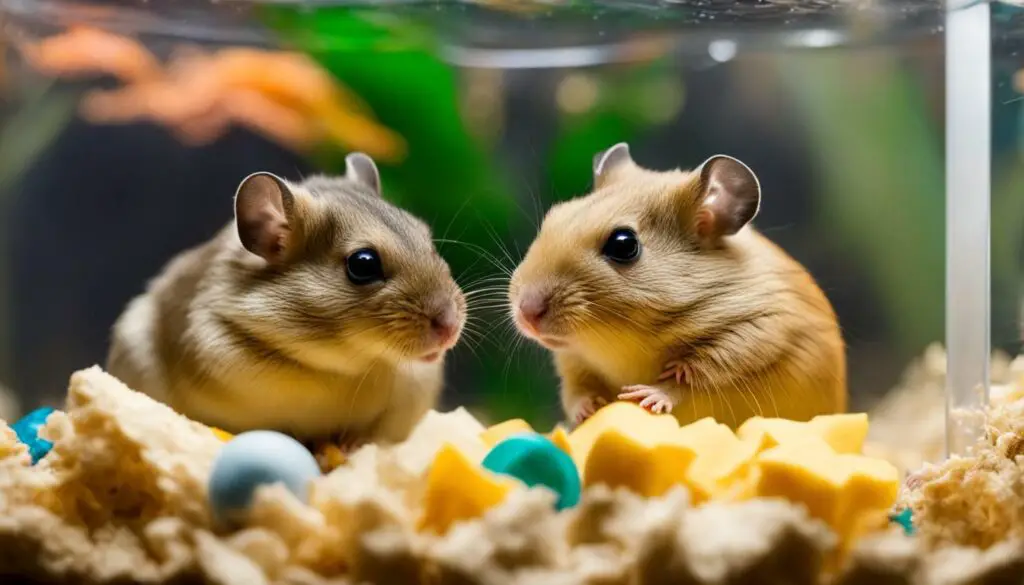
Unlike gerbils, hamsters are more solitary creatures that prefer to live alone. They have a territorial nature and may become aggressive if forced to share their living space with other hamsters or different species of rodents, such as gerbils. It is important to understand and respect their individual needs in order to provide a healthy and stress-free environment for them.
Hamsters have a natural instinct to mark their territory and establish boundaries. This can lead to conflicts if they are housed together, as they may perceive each other as intruders and engage in aggressive behaviors like biting or fighting. Therefore, it is not recommended to keep hamsters with other hamsters or different species in the same habitat.
To ensure the well-being of your hamster, it is best to provide them with a suitable living space that meets their specific requirements. A spacious cage with plenty of hiding spots and enrichment activities will allow them to exhibit their natural behaviors without the stress of sharing their territory with others.
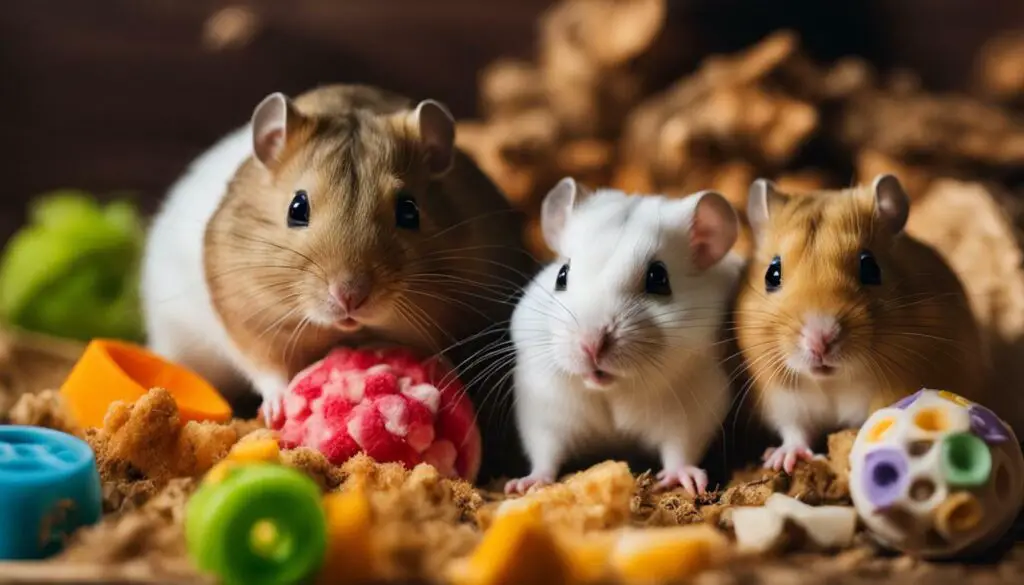
“Hamsters are solitary animals by nature and prefer to live alone. They establish their own territory and can become aggressive if forced to interact with other hamsters or different species. It is crucial to respect their need for solitude and provide them with a suitable habitat that allows them to thrive.”
| Differences between Gerbils and Hamsters | Gerbils | Hamsters |
|---|---|---|
| Social Behavior | Gerbils are highly social animals and thrive when kept in groups. | Hamsters are solitary creatures and prefer to live alone. |
| Sleeping Habits | Gerbils are diurnal animals and are most active during the day. | Hamsters are nocturnal animals and are most active during the night. |
| Dietary Requirements | Gerbils have specific dietary needs and require a varied diet consisting of fresh fruits, vegetables, and grains. | Hamsters have different dietary needs and require a high-quality hamster food that is specially formulated for their nutritional requirements. |
Considering the differences in behavior, sleeping habits, and dietary requirements between gerbils and hamsters, it is clear that they are better off living separately to ensure their individual well-being. Providing them with appropriate housing and companionship based on their species-specific needs will help to create a happy and healthy environment for both gerbils and hamsters as pets.
Different Sleeping Habits and Diets
Gerbils and hamsters have different sleep patterns and dietary preferences, making it difficult to create a shared habitat that caters to both. Gerbils are diurnal animals, meaning they are most active during the day and sleep at night. They require a quiet and undisturbed environment to get their recommended hours of sleep. On the other hand, hamsters are nocturnal creatures that are most active during the night. They prefer to sleep during the day and can be easily disturbed by noise and activity.
In terms of diet, gerbils and hamsters also have distinct preferences. Gerbils are omnivores and require a varied diet that consists of fresh fruits, vegetables, grains, and protein sources. They enjoy gnawing on hard food items to keep their teeth trimmed. Hamsters, on the other hand, are primarily herbivores and thrive on a diet rich in fresh fruits, vegetables, and high-quality commercial hamster pellets. They also need access to chew toys to maintain their dental health.
To meet the specific sleep and dietary needs of both gerbils and hamsters, it is recommended to provide separate habitats for each species. This allows them to have uninterrupted sleep and access to their preferred food sources. Creating individual enclosures also reduces the risk of aggression and territorial disputes that may arise from shared living spaces.
| Gerbils | Hamsters |
|---|---|
| Diurnal – Sleeps during the night | Nocturnal – Sleeps during the day |
| Omnivorous diet – Requires fresh fruits, vegetables, grains, and protein sources | Primarily herbivorous diet – Thrives on fresh fruits, vegetables, and high-quality commercial hamster pellets |
| Needs a quiet and undisturbed environment to sleep | Easily disturbed by noise and activity during the day |
By understanding and respecting the different sleep patterns and dietary preferences of gerbils and hamsters, you can ensure that each species receives the care and environment it needs to thrive. Providing separate habitats not only promotes their physical well-being but also minimizes the risk of stress, aggression, and health issues that can arise from shared living spaces.
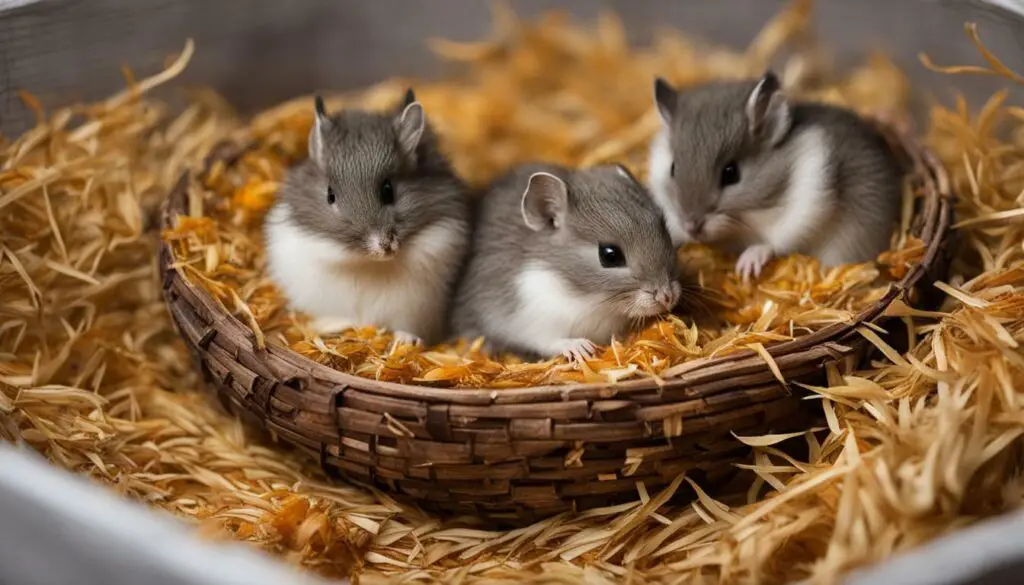
Gerbils and hamsters have distinct housing requirements due to their different sizes, activity levels, and territorial behaviors. Providing them with suitable habitats is essential for their well-being and overall health.
Gerbils are highly active animals that require ample space to roam, explore, and exercise. A spacious cage with multiple levels, tunnels, and hiding spots is ideal for them. They are burrowing animals, so it’s crucial to provide them with deep bedding material, such as wood shavings or paper-based bedding, to accommodate their natural digging instincts. Additionally, gerbils are social animals, and they thrive when kept in same-sex pairs or small groups. They should not be housed alone, as isolation can lead to stress and behavioral issues.
On the other hand, hamsters are more solitary and territorial creatures. They prefer smaller enclosures with less vertical space, as they are not natural climbers like gerbils. A good-sized hamster cage should have enough room for them to exercise and explore but not be excessively large. Hamsters require solid flooring rather than wire-bottom cages to prevent injury to their delicate feet. Adequate ventilation is essential to ensure a comfortable environment for them.
It is important to note that gerbils and hamsters should never be housed together in the same habitat. They have different social structures and can exhibit aggressive behaviors towards each other, leading to serious harm or even death. Mixing these two species can result in fights, stress, and territorial disputes. It is best to provide separate, species-specific habitats to ensure the well-being of both gerbils and hamsters.
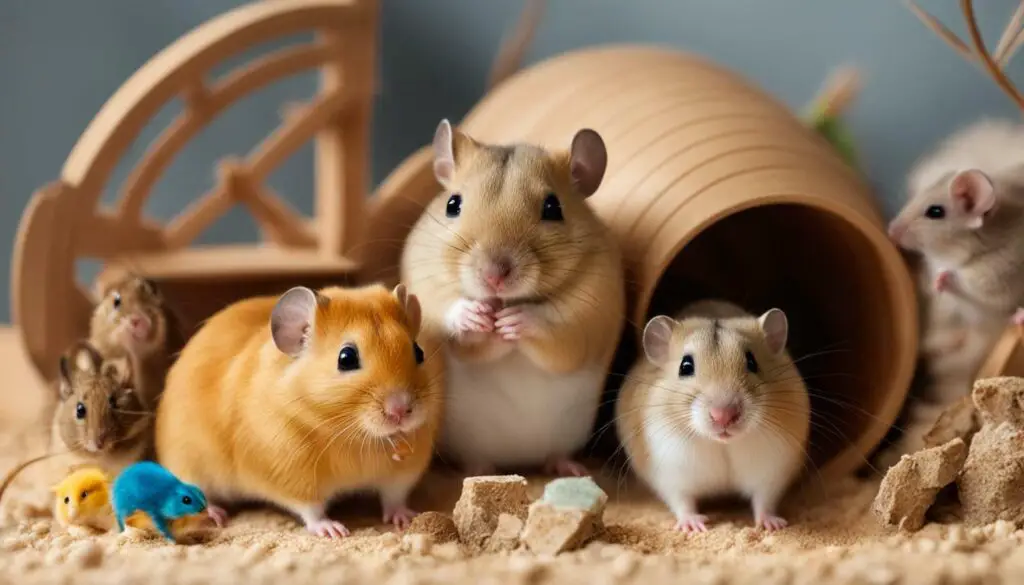
| Gerbils | Hamsters |
|---|---|
| Social animals that need companionship and stimulation | More solitary and territorial |
| Live in colonies of up to 20 other gerbils | Better off living with their own kind |
| Require spacious cages with multiple levels and tunnels | Prefer smaller enclosures with solid flooring |
| Need deep bedding material for burrowing instincts | Do not exhibit the same digging behavior as gerbils |
Aggression and Potential Harm
Mixing gerbils and hamsters can lead to aggression and potential harm, as their behaviors and instincts may clash. Gerbils are social animals that thrive in the company of their own kind, while hamsters are known to be more solitary and territorial. This fundamental difference in their nature can result in conflicts and even physical harm when they are housed together.
Gerbils are naturally inclined to live in colonies, and they require constant companionship and stimulation to thrive. When housed with unfamiliar gerbils, they may display aggressive behavior, such as biting, chasing, or even fighting. This aggression can lead to injuries, stress, and a decline in overall well-being. In contrast, hamsters are more self-reliant and prefer to have their own territory. They may perceive the presence of gerbils as a threat and respond with defensive behaviors, potentially leading to confrontations.
It is crucial to consider the compatibility of different species before attempting to house them together. While some rodents can coexist peacefully, gerbils and hamsters are not compatible roommates. Their distinct sleeping habits, dietary requirements, and housing needs further highlight the challenges of creating a suitable environment for both species. It is best to provide separate habitats for gerbils and hamsters to ensure their individual needs are met.
| Gerbils | Hamsters |
|---|---|
| Social animals | More solitary and territorial |
| Prefer living in colonies | Prefer having their own territory |
| Can be aggressive towards unfamiliar gerbils | May perceive the presence of gerbils as a threat |
In conclusion, it is not recommended to house gerbils and hamsters together due to their incompatible nature. Mixing them in the same habitat can lead to aggression, potential harm, and a compromised living environment for both species. Each animal has specific needs and requirements that should be met individually to ensure their health and well-being. Gerbils should be housed with other gerbils of the same sex, while hamsters are better off living with their own kind. By prioritizing the compatibility and welfare of these animals, we can create optimal living conditions and promote their overall happiness and longevity.
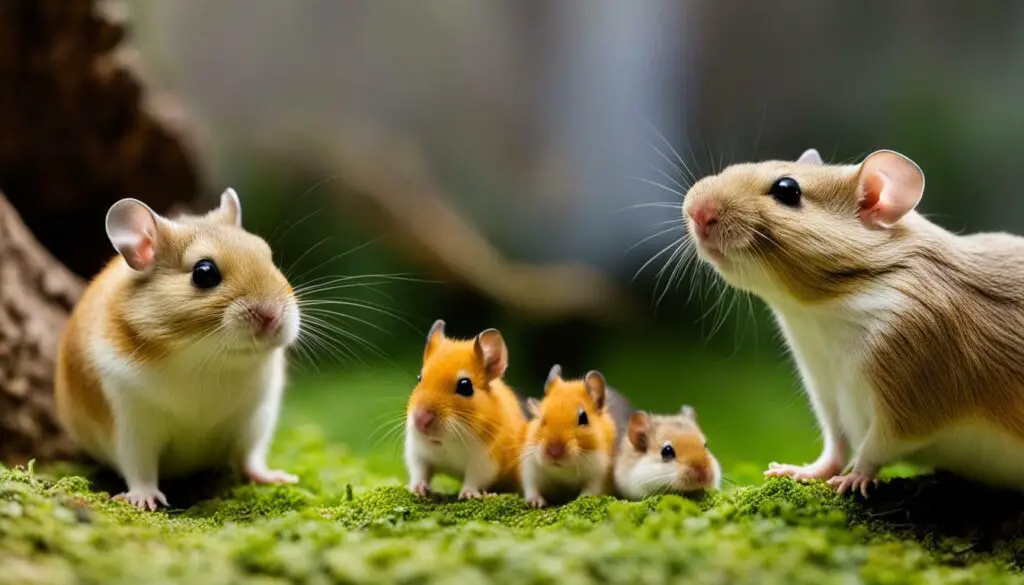
To meet their social needs, it is recommended to group gerbils with other gerbils and hamsters with other hamsters. Gerbils are highly social animals and thrive in the company of their own kind. They enjoy grooming each other, playing together, and even sleeping in a cuddle puddle. Their social interactions provide mental stimulation and emotional support.
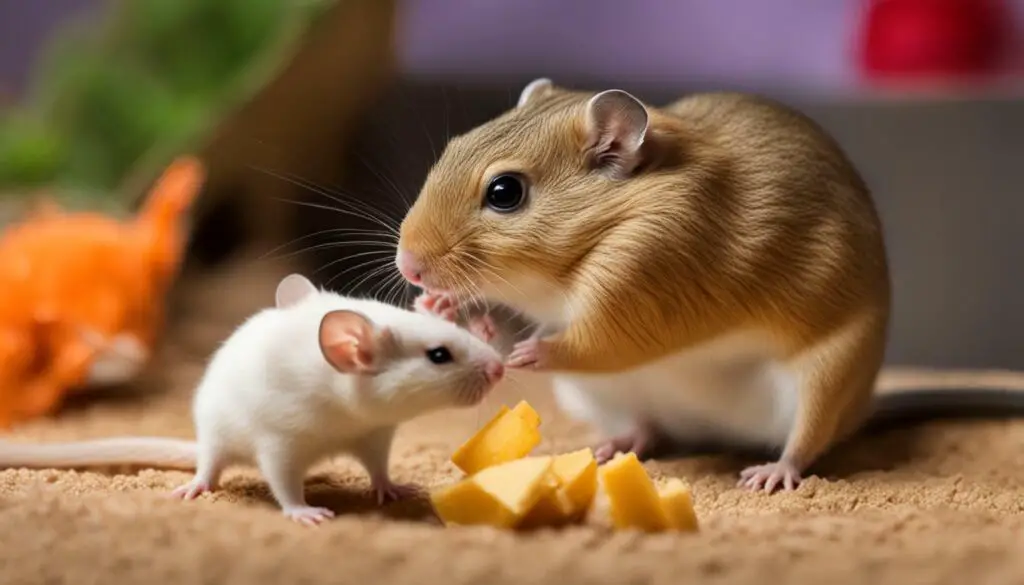
Hamsters, on the other hand, are solitary creatures by nature. They prefer to have their own space and can become territorial if forced to share their habitat with other hamsters or different species. Keeping hamsters together may lead to aggression, fights, and potential harm.
It is crucial to consider the specific needs and personalities of gerbils and hamsters when accommodating them. Mixing different species or forcing them to live together can cause stress and conflict, compromising their overall well-being.
Key Points:
- Gerbils are social animals and should be housed with other gerbils of the same sex.
- Hamsters are solitary creatures and are better off living alone.
- Mixing gerbils and hamsters can lead to aggression, fights, and potential harm.
- Consider the compatibility of different species before housing them together.
- Both gerbils and hamsters can carry diseases that can be transmitted to humans, so precautions should be taken to prevent infections.
| Gerbils | Hamsters |
|---|---|
| Highly social animals | Solitary creatures |
| Enjoy companionship and play | Prefer their own space |
| Live in colonies of up to 20 individuals | Best suited to living alone |
| Can be aggressive towards unfamiliar gerbils | May become territorial and fight with other hamsters |
Disease Transmission and Precautions
Both gerbils and hamsters can carry diseases that can be transmitted to humans, emphasizing the need for proper hygiene and care. It is important to take precautions to prevent infections and ensure the health and safety of both the animals and their human companions.
Gerbils and hamsters can carry common diseases such as salmonella and leptospirosis, which can be transmitted through direct contact with their feces, urine, or saliva. These diseases can cause serious illness in humans, especially in those with weakened immune systems. Therefore, it is crucial to always wash your hands thoroughly after handling gerbils or hamsters, as well as cleaning their cages or any items they come into contact with.
Furthermore, maintaining a clean and hygienic living environment for gerbils and hamsters is essential. Regularly clean their cages, bedding, and accessories to prevent the accumulation of bacteria or parasites. Use pet-safe cleaning products and follow the instructions carefully to ensure effective sterilization without harming the animals.
Additionally, it is advisable not to allow gerbils or hamsters to come into contact with other animals, especially those of different species. Mixing different species of rodents can lead to fights and injuries, increasing the risk of disease transmission. Keep gerbils with other gerbils of the same sex and hamsters with their own kind to minimize stress and potential conflicts.
| Precautions for Disease Prevention: |
|---|
| 1. Wash your hands thoroughly after handling gerbils or hamsters. |
| 2. Clean the cages, bedding, and accessories regularly to maintain a clean environment. |
| 3. Use pet-safe cleaning products and follow the instructions for effective sterilization. |
| 4. Avoid mixing different species of rodents to prevent fights and injuries. |
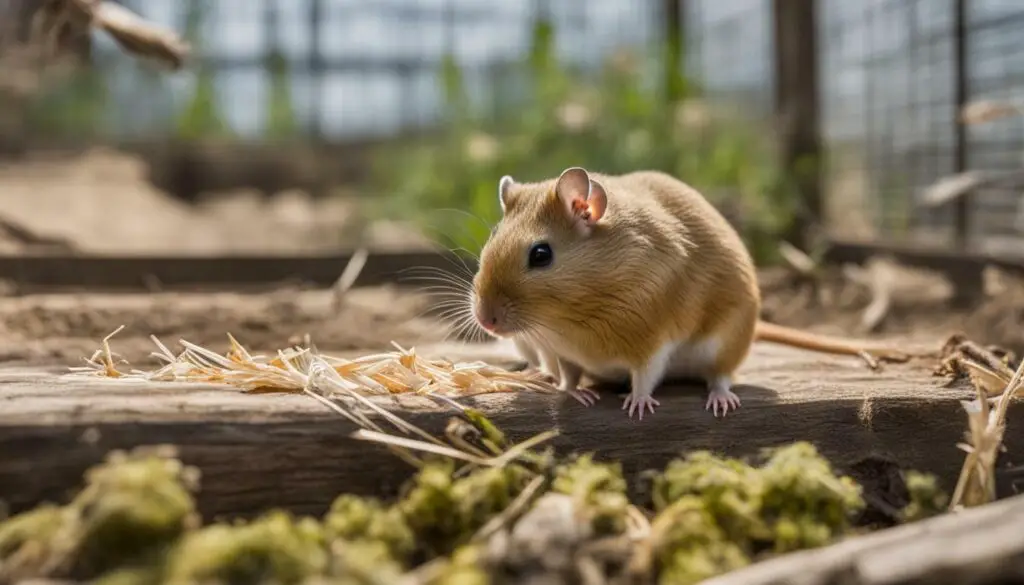
Proper hygiene and care are crucial when it comes to gerbils and hamsters as pets. These small rodents can carry diseases that can be transmitted to humans, highlighting the importance of taking necessary precautions. Wash your hands thoroughly after handling gerbils or hamsters, and ensure their living environment is kept clean and sanitized. Avoid mixing different species of rodents to prevent potential conflicts and injury. By following these guidelines, you can enjoy the companionship of these adorable pets while minimizing the risk of disease transmission.
Conclusion
In conclusion, gerbils and hamsters cannot live together due to their differing needs and behaviors, making it important to provide them with suitable habitats and companions of their own species. Gerbils are social animals that thrive in groups, requiring companionship and stimulation to lead a fulfilling life. They enjoy the company of other gerbils and can live in colonies of up to 20 individuals. However, gerbils can be aggressive towards unfamiliar gerbils, leading to potential harm and stress.
On the other hand, hamsters are more solitary and territorial creatures. They prefer to live alone and establish their own territory. Mixing different species of rodents, such as gerbils and hamsters, can result in fights and injuries as they may not tolerate each other’s presence. It is essential to consider the compatibility of different species before attempting to house them together.
Furthermore, gerbils and hamsters have different sleeping habits and dietary requirements. Gerbils are diurnal, meaning they are most active during the day and sleep at night. Hamsters, on the other hand, are nocturnal creatures, being most active at night and sleeping during the day. They also have distinct dietary preferences, with gerbils needing a diet rich in grains, seeds, and vegetables, while hamsters require a diet primarily consisting of seeds, nuts, and fruits.
Given these differences, it is crucial to provide separate housing for gerbils and hamsters. Gerbils thrive in spacious enclosures with plenty of bedding material, tunnels, and toys to keep them mentally stimulated. They should be housed with other gerbils of the same sex to avoid aggression and territorial disputes. Hamsters, on the other hand, require a suitable cage with ample space for exercise, nesting, and burrowing. They are best suited to live with their own kind and may become stressed or aggressive when forced to cohabitate with other species.
Lastly, both gerbils and hamsters can carry diseases that can be transmitted to humans. It is crucial to take precautions and practice good hygiene when handling these animals to prevent infections. Regular cleaning of their habitats and providing a clean environment are essential to ensure the health and safety of both the pets and their owners.
FAQ
Q: Can gerbils and hamsters live together?
A: No, gerbils and hamsters cannot live together because they have different needs and personality traits.
Q: Are gerbils social animals?
A: Yes, gerbils are social animals that thrive with companionship.
Q: What are the sleeping habits and diets of gerbils and hamsters?
A: Gerbils and hamsters have different sleeping habits and dietary requirements that may not be compatible when sharing a cage.
Q: Can gerbils and hamsters be aggressive towards each other?
A: Yes, gerbils and hamsters may exhibit aggression towards unfamiliar individuals of their own or different species.
Q: Can gerbils and hamsters be housed together if they are of the same sex?
A: No, it is not recommended to house gerbils and hamsters together, even if they are of the same sex.
Q: Do gerbils and hamsters carry diseases that can be transmitted to humans?
A: Yes, both gerbils and hamsters can carry diseases that have the potential to be transmitted to humans, so precautions should be taken to prevent infections.

